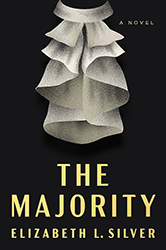Jacob Neusner is the senior fellow of the Institute of Advanced Theology and a fulltime professor at Bard College. He has written or edited more than 900 books and countless articles, both scholarly and academic, popular and journalistic, and has been awarded nine honorary degrees and 14 academic medals. He is undoubtedly the most prolific writer in any Jewish field of scholarship. However, grinding out book after book does not always guarantee quality. Many scholars have been critical of Neusner’s interpretations, methodology, and translations.
In Performing Israel’s Faith Neusner weighs in in defense of the idea of Jewish “covenantal nomism.” He wrote this book to show that “the commandments of the law are acts of faith” and to show that doxis (Aggadah) and praxis (Halakhah) are inseparable. He presents an analysis of texts from the Mishna and Tosephta as well as from both Talmuds to prove this.
The concept that Jewish Halakhah (law) and Aggadah (narrative) fit together to form a robust and coherent covenant theology— one directly concerned about this world— is not exactly news. Scholars have been writing about this for decades. Heschel, Soloveitchik, Lieberman, and a host of others have amply demonstrated what is for most, an accepted rabbinic position.
Neusner presents an examination of several key issues within Rabbinic Judaism— the nations, idolatry, sin, repentance and atonement — and demonstrates that neither Halakhah nor Aggadah can be fully and rightly understood in isolation from each other. Again, this point has been made many times before. Furthermore, some of Neusner’s broad generalizations are flawed. For example, he posits that all Gentiles are idolators, and that “To reveal the justice of God…is the purpose of the theological system of the Aggadah…”. His original translations of rabbinic texts may be felicitous but are occasionally in error. A major faux pas for a scholar of his rank is the omission of a note stating which standard editions of the Mishna or Tosefta he has chosen as his proof texts. For the layman this may not be important, but if someone were to check the primary source, he would not know where to look.
Of the 230 pages in this book, 96 pages are rabbinic texts in translation. It seems more appropriate for use as a classroom source book than as an independent work. We recognize Neusner’s critical and argumentative style, but what may be suited for students in academe is not always appropriate for the reading public.





